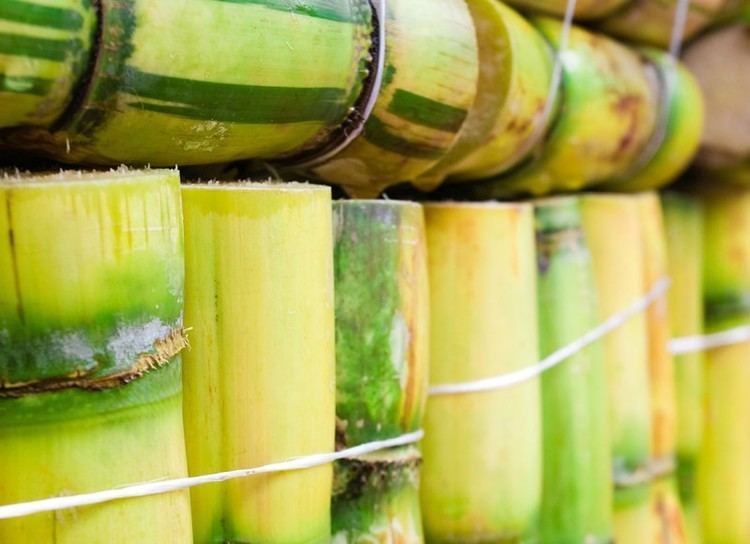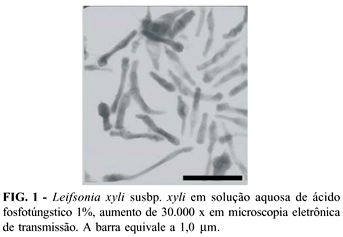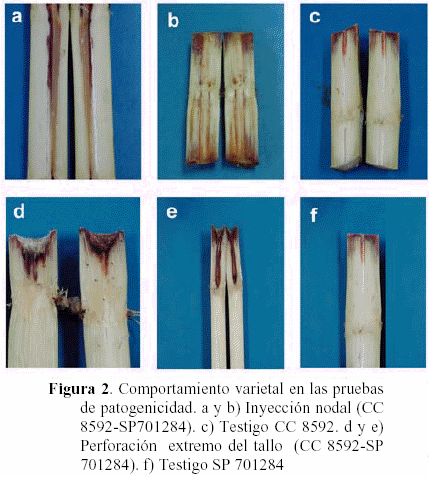Order Actinomycetales Genus Leifsonia Higher classification Leifsonia xyli | Phylum Actinobacteria Scientific name Leifsonia xyli Rank Subspecies | |
 | ||
Similar Bacteria, Clavibacter, High GC gram+, Xanthomonas albilineans, Curtobacterium | ||
Leifsonia xyli subsp. xyli is a small, fastidious, Gram-positive, coryneform bacterium that causes ratoon stunting disease, a major worldwide disease of sugarcane.
Contents

Classification

Formerly classified as Clavibacter xyli subsp. xyli, it was removed from the genus Clavibacter to create the genus Leifsonia, together with L. poae, found in Poa annua root galls, and L. aquatica, a free-living bacterium. Leifsonia xyli subsp. xyli is a fastidious member of the GC-rich Actinomycetales., a taxonomic order that contains other genera of plant pathogens of great agricultural impact, including Clavibacter, Curtobacterium, and Streptomyces.
Disease

Ratoon stunting disease is the most economically important disease of sugarcane, and is found in most sugarcane growing areas of the world. It can cause yield losses of up to 30% in susceptible varieties. The disease is difficult to identify and is transmitted mechanically or through infected seeds.
Transmission

Since the bacterium is present in the liquids of infected plants, it can be mechanically disseminated after contamination of the cane knives used in harvesting. Thus, the incidence of infected plants increases during successive ratoon crops. For this reason and for quite some time, cumulative losses due to the disease have probably been greater than the losses caused by any other sugarcane disease.
Evolution

The bacterium has never been found affecting wild clones of Saccharum officinarum in its centre of diversity, Papua New Guinea, which suggests either it has recently evolved to infect its host, or has been acquired from a related species. It is believed to have evolved from a single pathogenic clone, since no genetic variation was found among different isolates of distinct countries and cultivars.
Symptoms

Symptoms are highly dependent on the genetic background of the varieties and on environmental conditions. Because of this, the spread of the disease through planting material has beset most sugarcane growing areas in the world. Infected plants show reduced cane diameter and shortening of the internodes, i.e., stunting. Discolouration of vascular bundles of mature stalks may be seen in the form of discrete rosy dots or streaks just below the internodes where the bundles branch into the leaf sheath, but this is of little diagnostic value as infection by other pathogens may cause the same symptom.
Genetics
Leifsonia xyli subsp. xyli has a relatively large number of pseudogenes suggestive of an ongoing process of genome decay. L. xyli subsp. xyli has been proposed as once a free-living bacterium, but is now restricted to the xylem as a consequence or cause of the accumulation of pseudogenes. This point stems from the observation although L. xyli subsp. xyli has only been detected inhabiting the xylem of sugarcane, it carries several genes typical of free-living organisms. Leifsonia xyli has a genome that contains 2.58 Mbp with 2,030 protein coding genes.
